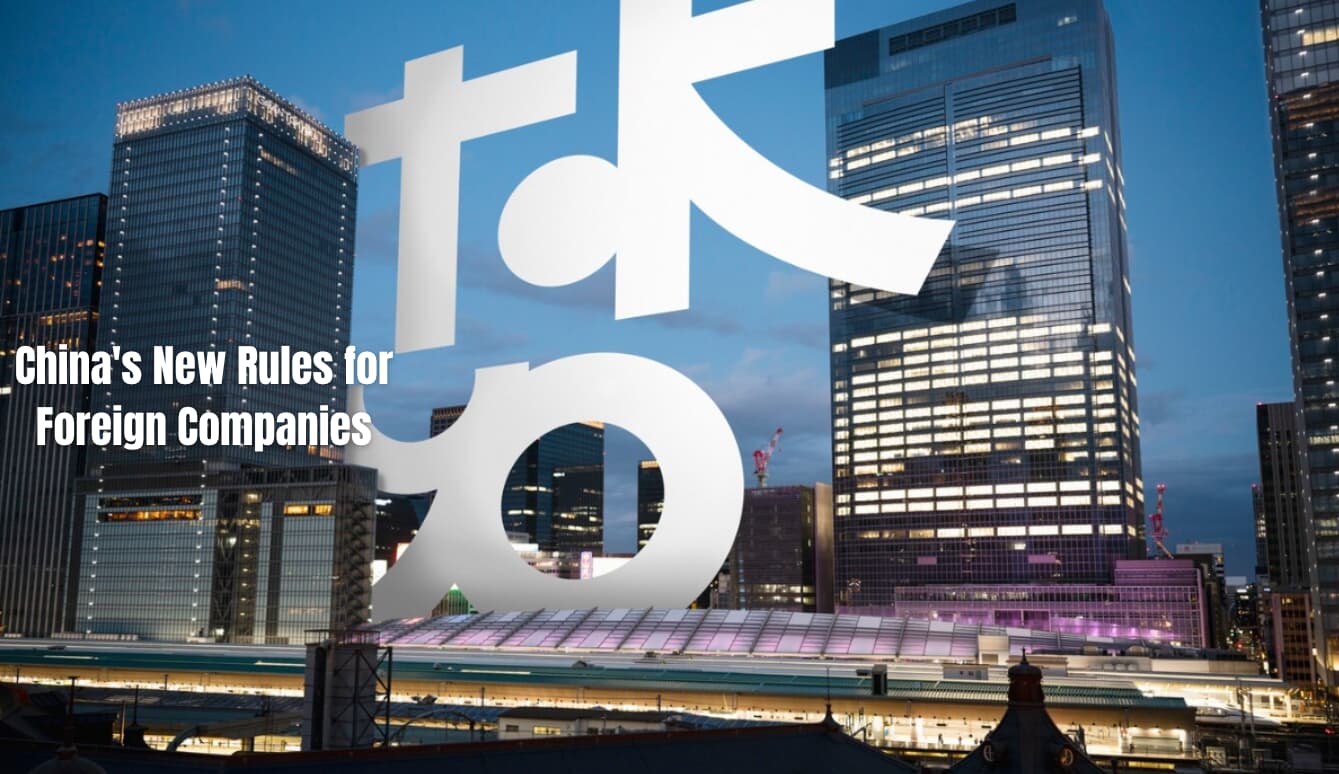China’s monetary policy plays a crucial role in shaping not only its domestic economy but also global financial markets.
As the world’s second-largest economy, decisions made by the People’s Bank of China (PBOC) have a significant impact on global trade, investments, and inflation.
This guide explains China's monetary policy, its mechanisms, and how it impacts businesses and investors.
Quick Insights ⚡:
- China's monetary policy is managed by the People’s Bank of China (PBOC).
- Key tools include interest rates, reserve requirements, and open market operations.
- The policy aims to strike a balance between growth, inflation, and currency stability.
- Recent years saw a mix of easing and targeted tightening.
- Policy changes impact global markets and the value of the yuan.
- Investors should monitor announcements from the PBOC.
China Monetary Policy: Key Concepts Explained
China’s monetary policy aims to maintain economic stability by targeting steady growth, low inflation, and a stable currency exchange rate.
The People’s Bank of China, or PBOC, employs a comprehensive set of tools to achieve these national objectives.
What Is China's Monetary Policy?
China’s monetary policy refers to the actions taken by the PBOC to guide money supply, lending, and interest rates throughout the country. The main objectives are to:
- Keep prices stable by managing inflation and deflation
- Support long-term economic growth
- Protect jobs and encourage employment
- Maintain the value of the renminbi (yuan)
The PBOC has a dual mandate. This means it focuses not only on maintaining stable prices but also on promoting overall economic growth.
The PBOC uses tools such as setting interest rates, adjusting bank reserve requirements, and occasionally directly guiding banks on the amount they can lend.
The PBOC will occasionally adjust its policies in response to local and global financial conditions.
For example, if growth slows or risks increase, it may lower interest rates or reduce reserve requirements to help increase lending and spending.
How China’s Monetary Policy Differs from Western Models?
China’s approach to monetary policy is more centralized than that seen in places like the United States or Europe.
Some key differences:
- The Chinese government has greater direct influence over banks and financial markets.
- Large state-owned banks play a significant role in lending and adhere to numerous direct guidelines from regulators.
- The PBOC often uses a mix of less visible tools, such as guiding loan growth targets or using "window guidance," rather than only relying on changing interest rates.
- Currency management is more active. The PBOC often intervenes to help maintain the yuan's stability, especially during periods of market volatility.
- Decisions tend to focus on national development plans and social stability, not just economic cycles.
In many Western countries, independent central banks usually focus more on inflation and unemployment, with less direct government involvement.
In China, policies are closely linked with national goals and are adjusted more flexibly to fit government plans.
⚖️ Also Read: China Banking and Insurance Regulatory Commission Explained
How the PBOC Implements China's Monetary Policy

You will notice that the PBOC does not rely on just one tool. Instead, it employs a combination of policy levers to manage inflation, stimulate growth, and respond to changes both within and outside China.
The PBOC closely monitors inflation, credit growth, and financial risks. It frequently adjusts multiple tools together, rather than focusing on one single measure.
These coordinated actions distinguish China’s approach from that of many Western central banks.
1. Reserve Requirement Ratio (RRR)
The Reserve Requirement Ratio (RRR) is the percentage of deposits that banks are required to hold at the central bank. This is a powerful lever for changing how much money banks can lend.
When the PBOC lowers the RRR, commercial banks can lend more money to households and businesses.
This typically leads to more loans, which helps accelerate economic growth. In 2025, for example, China reduced the RRR to inject around 1 trillion yuan in long-term funds into the financial system.
Raising the RRR means banks must hold a higher percentage of their funds in reserve. This makes it harder to lend. Higher RRR can slow bank lending and money growth, which helps keep inflation and financial risks low.
At times, the PBOC uses tiered RRRs. These require different reserve ratios for different types or sizes of banks.
This method allows the central bank to provide additional support to smaller or weaker banks as needed.
2. Interest Rate Adjustments
The PBOC guides interest rates in China using several tools. The most important is the Loan Prime Rate (LPR), which is set by a group of major banks but is heavily influenced by PBOC policy.
Lowering the LPR makes borrowing more affordable. When interest rates decrease, businesses and individuals typically take out more loans to spend or invest, thereby helping the economy expand.
For example, in May 2025, the PBOC lowered the seven-day reverse repo rate to a record low, aiming to reduce short-term borrowing costs.
Interest rate adjustments also include changes to benchmark deposit and lending rates, which guide all other rates in the country. These changes affect mortgages, small business loans, and other types of borrowing.
Interest rates shape bank profits, loan demand, and consumer spending. The PBOC must balance the need for lower rates to boost growth with the risk of banks earning less or taking on excessive risk.
3. Open Market Operations (OMOs)
Open Market Operations are daily actions in which the PBOC buys or sells government bonds to banks or other financial firms.
These actions directly change the amount of money in the banking system.
When the PBOC buys bonds, it adds cash to banks, making it easier for them to lend.
When it sells bonds, it withdraws cash, which tightens credit.
A key part of China’s OMOs is the Medium-Term Lending Facility (MLF). The MLF allows banks to borrow funds from the central bank for a period of a few months to up to a year.
It has become a main tool for guiding interest rates and providing stable funding.
The PBOC utilizes OMOs and the MLF in tandem to maintain stable daily and long-term market rates.
These operations help maintain the right level of bank liquidity and facilitate the implementation of other types of policy adjustments.
4. Macroprudential Policies
Macroprudential policies are special rules and programs designed to maintain the overall health of the financial system.
Instead of just focusing on the amount of money or lending, these policies watch for risky lending trends and asset bubbles.
One example is targeted lending programs, where the PBOC gives incentives for banks to lend to small businesses, green projects, or technology sectors.
In 2025, new relending facilities were established for services such as elderly care and car purchases.
Another part of macroprudential policy is property sector controls. The PBOC has established strict guidelines on the amount of lending that banks can extend to property developers and homebuyers, aiming to mitigate debt risks.
Common macroprudential tools include:
- Lending quotas for banks in risky sectors
- Debt-to-income and loan-to-value ratios for mortgages
- Relending and rediscount facilities for priority sectors
- Monitoring of shadow banking and off-balance sheet lending
You will find that these policies can change frequently as the PBOC responds to new risks or shifting economic objectives.
This flexible approach is a key feature of China’s modern monetary policy.
⚖️ Also Read: China Bankruptcy Law: Key Regulations, Procedures & Requirements for Filing
China Monetary Policy in Action: 2024-2025 Trends and Updates
China’s recent monetary decisions focus on supporting economic growth, stabilizing prices, and introducing digital solutions. Changes include a shift toward looser monetary conditions, new tools for managing money supply, and the ongoing rollout of digital currency.
Recent Policy Shifts and Reasons
You have seen China shift from a "prudent" stance to a "moderately loose" monetary policy in 2025. This is a response to slower economic growth following the pandemic, weak domestic demand, and challenges in the global environment, including trade tensions and supply chain disruptions.
The People's Bank of China cut the reserve requirement ratio and interest rates to boost liquidity.
Targeted assistance has been provided to sectors such as real estate and small businesses. For example, existing mortgage rates were reduced, and new lending tools were created for struggling companies.
Policymakers hope this support will increase spending and investment, especially as some factories and exporters face new obstacles.
Key drivers for these policy shifts:
- Slower growth after 2023.
- High youth unemployment.
- Falling property prices.
- Weak global demand for Chinese goods.
These changes aim to create better conditions for growth without overheating the economy.
Inflation, Growth, and Currency Management
Your experience with China's monetary policy in 2024 and 2025 shows a careful balance between growth and stable prices.
Despite aiming for about 5 percent growth, inflation has stayed low, and fears of deflation have emerged as property prices and consumption slowed.
The central bank maintained a steady growth in the money supply while remaining vigilant to sudden changes.
To manage inflation and growth, the government uses:
- Adjustments to reserve ratios and interest rates.
- More lending to key industries.
- Tight controls on capital outflows to avoid large swings in the exchange rate.
China’s central bank also acts quickly if risks appear. The yuan's exchange rate remains a key focus, with the central bank intervening to prevent sharp fluctuations.
This helps protect your economic stability and maintains confidence for businesses and households.
The Role of Digital Currency (e-CNY)
China’s digital yuan or e-CNY, is now playing a bigger part in your country's monetary system. By 2025, more cities and sectors are expected to have started using e-CNY for payments, wages, and even government benefits.
The e-CNY supports cashless payments, helps reduce transaction costs, and can reach people in rural areas with limited banking services.
Why e-CNY matters:
- Offers faster payment settlements.
- Makes it easier for policymakers to track and manage money flows.
- Enhances financial inclusion for those without traditional banking.
The digital yuan also gives authorities new tools for managing the economy. With better control over transactions and data, monetary policy can become more targeted and effective in the future.
How China's Monetary Policy Affects Global Markets

China’s monetary policy decisions impact the global flow of trade, investment, and capital. Moves by the People’s Bank of China (PBOC) often affect exchange rates, commodity prices, and financial markets far beyond China’s borders.
On Global Trade & Commodities
When the PBOC takes steps to lower interest rates or weaken the yuan, Chinese goods become more competitive abroad. A weaker yuan means that you may see lower prices for electronics, clothing, and machinery made in China.
This leads to trade imbalances, particularly for countries that import substantial quantities of goods from China.
Monetary easing also increases demand for raw materials. If China boosts growth or invests in infrastructure, there is a direct rise in imports of iron ore, copper, and oil.
This increased demand can drive up global prices for commodities. If you are in a resource-exporting country, these shifts affect your business and government revenues.
Below is a snapshot of important commodities influenced by China’s policy moves:

On Foreign Exchange & Investments
Changes by the PBOC move global capital. When Chinese rates drop or the yuan falls, money may leave China in search of better returns.
As an investor, this can influence bond yields, stock prices, and even real estate markets in other countries.
Stock markets in Asia, Europe, and the US often react to policy signals from China. The Shanghai Composite Index, for instance, responds directly to the PBOC's decisions.
International funds may shift allocations, affecting everything from US Treasury yields to emerging market currencies.
Capital controls in China aim to limit these flows, but investors closely monitor yuan movements. If you are active in global markets, PBOC announcements are key signals to monitor.
On Emerging Markets
Emerging market economies are sensitive to China’s policy choices. If China increases lending or ramps up infrastructure investment, countries in Asia, Africa, and Latin America that export raw materials to China may experience a surge in growth.
At the same time, easy money from China can lead to higher debt levels for countries that borrow heavily from Chinese banks or through China’s Belt and Road Initiative.
If the PBOC tightens policy or the yuan weakens sharply, these nations may face repayment challenges or slower export growth.
You may also see asset prices and local currencies in emerging markets move in response to shifts in China’s economic direction.
This means Chinese monetary policy plays a crucial role in shaping economic conditions and financial risks in much of the developing world.
⚖️ Also Read: List of Major Banks in China: A Full Guide
Conclusion
You have seen how China’s monetary policy combines government direction with market forces. The People’s Bank of China (PBOC) frequently employs interest rate adjustments and tools such as the reserve requirement ratio (RRR) to achieve its economic objectives.
Staying informed about key decisions—such as rate cuts or liquidity support—helps you understand trends and anticipate how markets may respond.
Some key recent actions include:
- RRR cuts to boost liquidity
- Lowering policy rates
- Support for real estate, technology, and small businesses
The PBOC collaborates closely with other regulatory agencies, including the National Financial Regulatory Administration and the China Securities Regulatory Commission. This helps keep financial markets stable, even during periods of global uncertainty.
Paying attention to policy updates is important because these changes often affect not only China but also the global economy.
Staying alert will help you make better decisions in a fast-changing landscape.
❓Frequently Asked Questions
China employs a combination of tools to manage its money supply, interest rates, and banking system. The primary focus is on maintaining economic stability, fostering growth, and mitigating risks in the financial sector.
What is the monetary system of China?
China’s monetary system is managed by the People’s Bank of China (PBOC). The PBOC controls the supply of money and credit in the country. The Chinese yuan (CNY) is the official currency and is not fully convertible on the global market.
What is the main goal of China’s monetary policy?
The primary objective is to promote stable economic growth while maintaining control over inflation and financial risks. The policy also aims to support jobs, boost domestic demand, and keep the yuan’s stable exchange rate.
How often does China change interest rates?
China does not have a fixed schedule for changing interest rates. The PBOC adjusts rates in response to economic needs, typically several times a year or less. Adjustments can also come quickly if the economy shows signs of trouble or when the global situation shifts.
What is the reserve requirement ratio in China?
The reserve requirement ratio (RRR) is the portion of deposits that banks must hold in reserve. The PBOC adjusts this ratio to help control the amount of money banks can lend. In 2025, China’s central bank plans to lower the RRR when needed to encourage more lending and support economic growth.
How does China’s monetary policy affect Bitcoin?
China’s monetary policy can influence Bitcoin by affecting the value of the yuan and the country's money flow. Stricter or looser money controls can impact people’s ability to buy and sell Bitcoin. China also has strict regulations on cryptocurrency, which can limit the use of Bitcoin in the country.
Subscribe to receive updates
Subscribe to receive the latest blog posts to your inbox every week.






